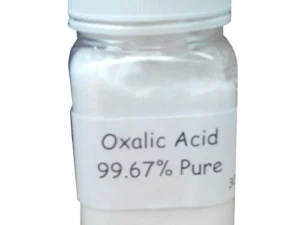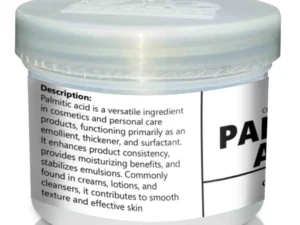Description
Acrylic Acid: A Versatile Building Block Shaping Modern Life
Acrylic acid is a chemical that might not be a household name, but it’s a crucial building block in countless products we use every day. From paints and adhesives to diapers and detergents, this colorless liquid plays a vital role in modern manufacturing and innovation.
What is Acrylic Acid?
Acrylic acid (CH₂=CHCOOH) is a carboxylic acid with a distinctive pungent odor. It’s a reactive, unsaturated organic acid, meaning it contains a double bond in its molecular structure, making it capable of forming long chains called polymers. It is typically produced from propylene, a byproduct of oil refining, through a process involving oxidation.
The Power of Polymerization: From Acid to Acrylics
The real magic of acrylic acid lies in its ability to polymerize. When acrylic acid molecules join together, they create polymers known as polyacrylic acid (PAA) and its derivatives, commonly referred to as “acrylics.” These acrylic polymers possess a wide range of desirable properties, making them incredibly versatile.
Applications Across Industries:
The diverse properties of acrylic polymers have led to their widespread adoption in numerous industries:
- Paints and Coatings: Acrylic polymers are a cornerstone of modern paints and coatings. They provide excellent weather resistance, durability, and adhesion, resulting in long-lasting and vibrant finishes for homes, automobiles, and infrastructure.
- Adhesives and Sealants: The strong adhesive properties of acrylic polymers make them ideal for use in various adhesive and sealant applications, from everyday tapes and pressure-sensitive adhesives to industrial-strength bonding agents.
- Superabsorbent Polymers (SAPs): Cross-linked polyacrylic acid is a key ingredient in superabsorbent polymers. These materials can absorb hundreds of times their weight in liquid, making them essential components in diapers, feminine hygiene products, and agricultural water retention systems.
- Textiles: Acrylic fibers are used to create fabrics that are lightweight, soft, and resistant to wrinkles and fading. They are often blended with other fibers like wool or cotton to enhance their performance.
- Detergents and Cleaning Products: Acrylic polymers can act as thickening agents and dispersing agents in detergents and cleaning products, improving their effectiveness and stability.
- Medical Applications: Acrylic polymers are finding increasing applications in the medical field. They are used in medical adhesives, dental materials, and drug delivery systems due to their biocompatibility and ability to be tailored to specific needs.
Sustainability and the Future of Acrylic Acid:
While acrylic acid is currently produced primarily from fossil fuels, there is a growing interest in developing more sustainable production methods. Research is underway to explore bio-based alternatives, using renewable resources like sugars and plant oils to produce acrylic acid. These innovations aim to reduce the environmental impact of acrylic acid production and promote a more circular economy.
Conclusion:
Acrylic acid is a silent but mighty chemical that underpins a vast array of products that improve our daily lives. Its ability to form versatile polymers makes it an indispensable ingredient in numerous industries. As research continues to focus on sustainable production methods, acrylic acid is poised to remain a vital building block for innovation and progress in the years to come.












Reviews
There are no reviews yet.